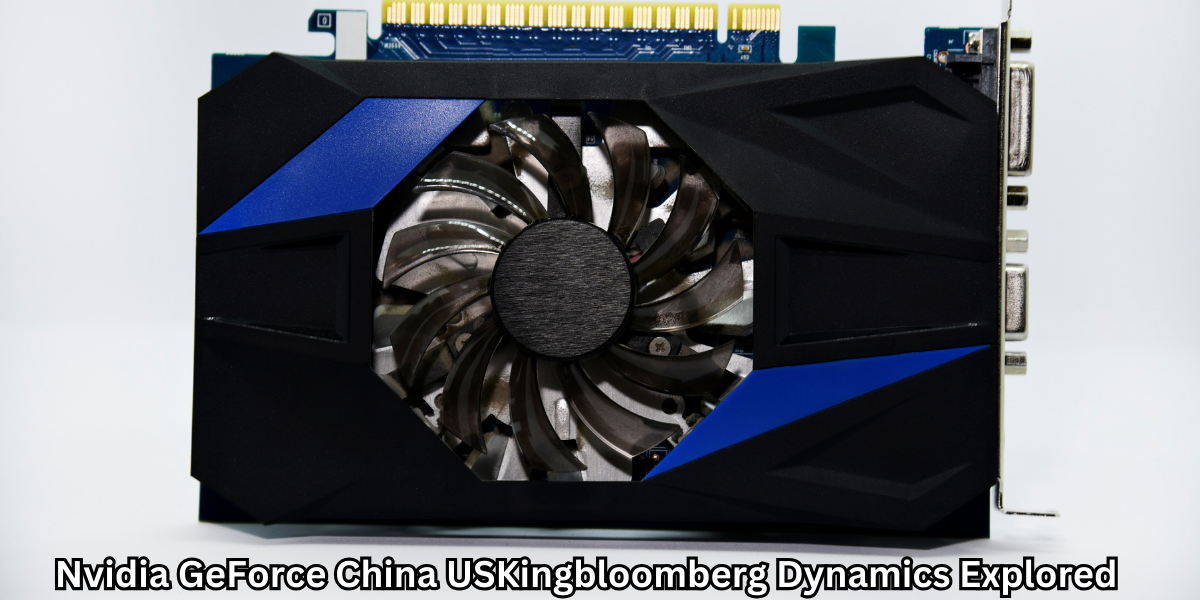Nvidia GeForce China USKingbloomberg Dynamics Explored
Nvidia, a global leader in graphics processing units (GPUs), has been a focal point in the ongoing technological race between China and the United States. With the emergence of AI-driven applications and the increasing importance of GPUs, the geopolitical landscape has made Nvidia’s role even more critical. This article explores the intricate dynamics involving Nvidia GeForce, China, and the US, diving into the implications for global technology and innovation.
What Makes Nvidia GeForce a Global Powerhouse?
Nvidia GeForce stands as a premier line of GPUs, renowned for its advanced graphics rendering and AI capabilities. Here are some of its key features:
| Feature | Description |
|---|---|
| Ray Tracing | Simulates realistic lighting effects in real-time. |
| DLSS (Deep Learning Super Sampling) | AI-powered image upscaling for smoother graphics. |
| CUDA Cores | Enhances parallel processing for AI and gaming tasks. |
| Efficiency | Optimized power consumption for high performance. |
Applications of Nvidia GeForce
- Gaming: Industry-leading GPUs for AAA games.
- AI Development: Used in neural networks and data analysis.
- Content Creation: Accelerates rendering for 3D modeling and video editing.
- Scientific Computing: Powers simulations and complex calculations.
Read Also: MPIGR Home Everything You Need to Know | Prerana UP.in Guide to Uttar Pradesh’s Scholarship
The China-US Technological Rivalry
The relationship between Nvidia, China, and the US is a microcosm of broader geopolitical tensions. Here’s how the landscape unfolds:
US Export Restrictions
In recent years, the US has tightened export controls on advanced chips to China, citing national security concerns. Nvidia’s cutting-edge technology, particularly its GPUs, has been at the center of these restrictions.
Key Developments:
- CHIPS Act: Encourages domestic semiconductor production in the US.
- Bans on AI GPUs: Limitations on high-end Nvidia chips like A100 and H100 being sold to Chinese entities.
China’s Strategic Response
China has ramped up efforts to develop its semiconductor industry to reduce reliance on US technologies.
Measures Taken:
- Increased R&D: Billions invested in domestic GPU production.
- Partnerships: Collaboration with domestic companies like SMIC (Semiconductor Manufacturing International Corporation).
Nvidia’s Position
Nvidia has found itself balancing between complying with US policies and maintaining its business interests in China, one of its largest markets.
Read Also: MyFastBroker.com A Comprehensive Guide to Fast Trading
Impact on Nvidia’s Business
Short-Term Effects
- Revenue Decline: Loss of Chinese market share.
- Stock Volatility: Market responses to geopolitical announcements.
Long-Term Opportunities
- Diversification: Expanding into other markets, including Europe and India.
- Innovation: Increased focus on AI and quantum computing.
Read Also: Discover the Power of 5starsstocks .com Investment Partner
Nvidia GeForce A Catalyst for Global Innovation
Nvidia GeForce represents more than just advanced GPU technology; it is a symbol of innovation that transcends borders. Despite geopolitical challenges, Nvidia continues to innovate and lead in AI, gaming, and scientific research. The China-US rivalry only highlights the critical importance of this technology in shaping the future.
Key Takeaways
- Nvidia GeForce remains a critical asset in global technological development.
- US-China tensions create both challenges and opportunities for Nvidia.
- Continued innovation is essential to maintain Nvidia’s leadership in the industry.
By navigating these complex dynamics, Nvidia GeForce continues to solidify its position as a global powerhouse in the ever-evolving tech landscape.
Read Also: Running Safari For Windows: Overcoming Common Testing Challenges
Conclusion
The evolving dynamics between Nvidia GeForce, the US, and China epitomize the broader competition in the technology sector. Nvidia’s GPUs play a pivotal role in advancing AI, gaming, and scientific research, underscoring their strategic significance. While US export restrictions present challenges, they also drive innovation and diversification for Nvidia. China’s response, marked by heavy investment in its semiconductor industry, further intensifies this technological race. As Nvidia continues to innovate and adapt, it remains a critical player shaping the future of technology in an interconnected and competitive world.
FAQs on Nvidia GeForce China USKingbloomberg
1. Why is Nvidia important in the China-US tech war?
Nvidia’s GPUs are critical for AI, gaming, and scientific applications, making them strategically significant in the global tech race.
2. What GPUs are restricted from export to China?
High-end GPUs like Nvidia’s A100 and H100 are subject to US export restrictions due to their AI capabilities.
3. How is China responding to US restrictions?
China is investing heavily in domestic semiconductor development to reduce reliance on US technologies.
4. Will Nvidia’s revenue suffer due to restrictions?
While there may be short-term impacts, Nvidia’s diversified product portfolio could mitigate long-term losses.
5. What is the CHIPS Act, and how does it affect Nvidia?
The CHIPS Act aims to boost US semiconductor production, indirectly benefiting Nvidia by fostering innovation and reducing reliance on foreign manufacturing.





